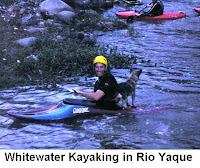Did you know there was a castle in Nicaragua? Not only is there a castle, but it has a fun history as well. This week, our Tri-Country students are seeing and learning about this northern neighbor and its rich history which includes El Castillo.

To understand why El Castillo became an important spot in Nicaragua, it's best to first view its geography on this satellite map.
The students arrive at El Castillo by water taxi from Rio San Carlos - the town can only be reached by boat. The town’s name is derived from the fortress built by the Spanish in 1675 with the idea of protecting its colonial cities inland from pirates and other countries by blocking the river. It was built on a hill on the shores of the San Juan River, which connects Lake Cocibolca with the Caribbean Sea. This route was used on various occasions by pirates to attack Spanish settlements bordering the river. The most precious Spanish city of that time, Granada, was also attacked several times.

Now let's get down to the fun history.
When Britain and Spain clashed in Central America during the 18th century, control over the San Juan River and Lake Nicaragua was one of the great prizes in their conflict. Any conquering force needed first to capture the fort at El Castillo, and in 1762 the British mounted an attack that was thwarted by a woman's valor.
''According to the traditional account, the Spanish sergeant in charge, seeing the hopeless odds against him, started to hand over the keys of the fort when his hand was stayed by Rafaela Herrera, young daughter of the deceased commandant,'' one historian has written. ''Rafaela herself, whose entire life had been spent in forts, took charge of the cannon, and killed the English commander with the third shot. A desultory artillery duel followed for four days; then the English withdrew.''
Britain did not give up easily, however. In 1780, a flotilla set out from Jamaica for a second assault on El Castillo. Among the leaders was Horatio Nelson, then a young captain.
British troops cut the fort's water supply, besieged it for 17 days and finally seized it. But the British force was ravaged by disease and overwhelmed by rain, which falls here at the rate of 200 inches a year. So weakened that survivors could not muster enough strength to bury their dead, the British were unable to advance and extend their power into the heart of Central America. Spain's hold on the region was secure.
Semester students get more than just outdoor adventure, animal photography and language; they learn why not to mess with women with cannons.








